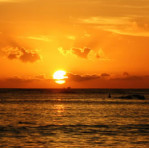What to take to Aloha Music Camp
Aloha first-time AMC Campers!
We are looking forward to having you join the Aloha Music Camp ʻohana (family)! As you start preparing for Camp, the following list might be helpful. These are Camp-specific items you may want or need, in addition to your usual attire and supplies for a week at a resort hotel in Hawaiʻi!
Musicians
- Instruments (guitars and/or ‘ukulele, etc.)
- Instrument strings. We recommend you arrive at Camp with strings on your instruments that are in good condition.
- Steel-string guitar players, we recommend that you put a new set of strings on your guitar within a week or so before Camp. Changing tunings back and forth—a very common thing in slack key classes—can be hard on old strings, and they may break.
- Nylon-string guitar players, nylon strings tend to last longer than steel strings and changing strings right before Camp might cause some frustration as nylon strings take a while to stretch out and settle in to tunings. That said, you still want strings with lots of life so if it has been a couple years since you changed them, consider putting new strings on a few weeks before Camp. That should be adequate time to let them settle in.
- ‘Ukulele players, same recommendation as for nylon-string guitar players.
- Extra strings. If you follow the recommendations above you probably won’t need them, but having an extra set of strings is good insurance.
- String cutting tool. These are very much optional, as you can usually borrow one from somebody.
- Tuners. Take either a tuner that can be attached to your instrument, or a software-based tuner on your phone. The attached tuners are better for classes where lots of other sounds may be competing for your software tuner’s ears!
- Music stand. (Also optional, but quite convenient.) Our Foundation administrator and musician extraordinaire, Claudia Goddard, has turned many of us into fans of her favorite portable music stand: the K&M portable Professional Music Stand (if you get a stand make sure you get the carrying bag too). Johnson String Instrument is the supplier she uses in the New York area. You can also find K&M stands on Amazon.
- Clothes pins, clips, or magnets that will work on your music stand to keep sheet music from flying away in the wind.
- Digital audio recorder. (Another optional item.) Very useful to record class – particularly if your kumu (instructor) demonstrates a difficult musical passage, you can practice with the recording. (It’s always important to ask the kumu permission first, before you record!) Your phone is often best for this purpose.
- Fingernail trimmers/files.
- Gig bags for carrying instruments around Camp. Some folks don’t like to deal with the full weight of their instrument cases for the whole week of Camp. If you might be such a person, please at least use a good quality padded gig bag to protect your precious guitar or ‘ukulele.
- Reusable water bottle. Staying hydrated just makes everything better; so does minimizing our contribution to the waste stream.
Hula Dancers
- Comfortable, loose-fitting clothing. Many dancers wear a pāʻū Hawaiian hula practice skirt, although this is not required. Amazon carries pāʻū, as does Hawaiʻi Fabric Mart. They are generally 1-size-fits-all.
- Lotions and/or suncreen. Also perhaps some anti-inflammatories for those sore muscles!
- Reusable water bottle (staying hydrated just makes everything better; so does minimizing our contribution to the waste stream)
Hawaiian Language, Chant, and Crafts Classes
- Paper or Digital Notepad. Keep your notes safe for many months of post-Camp practice!
- Recording Device. As mentioned above, if allowed by the kumu (instructor), you might want to record some of the most important parts of your time together for future reference.
